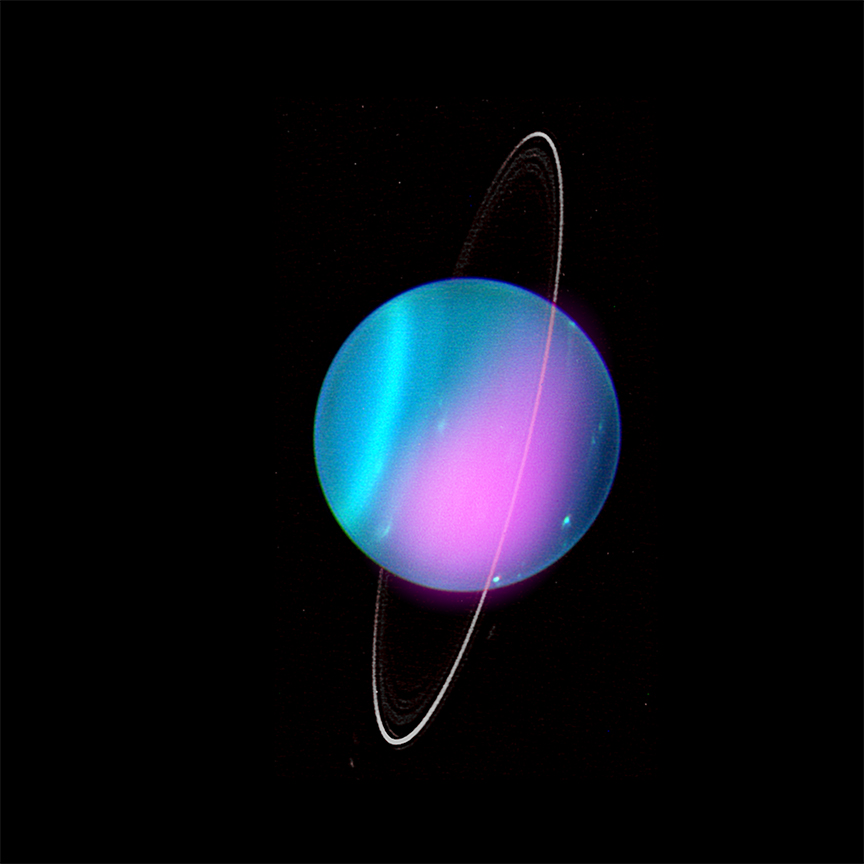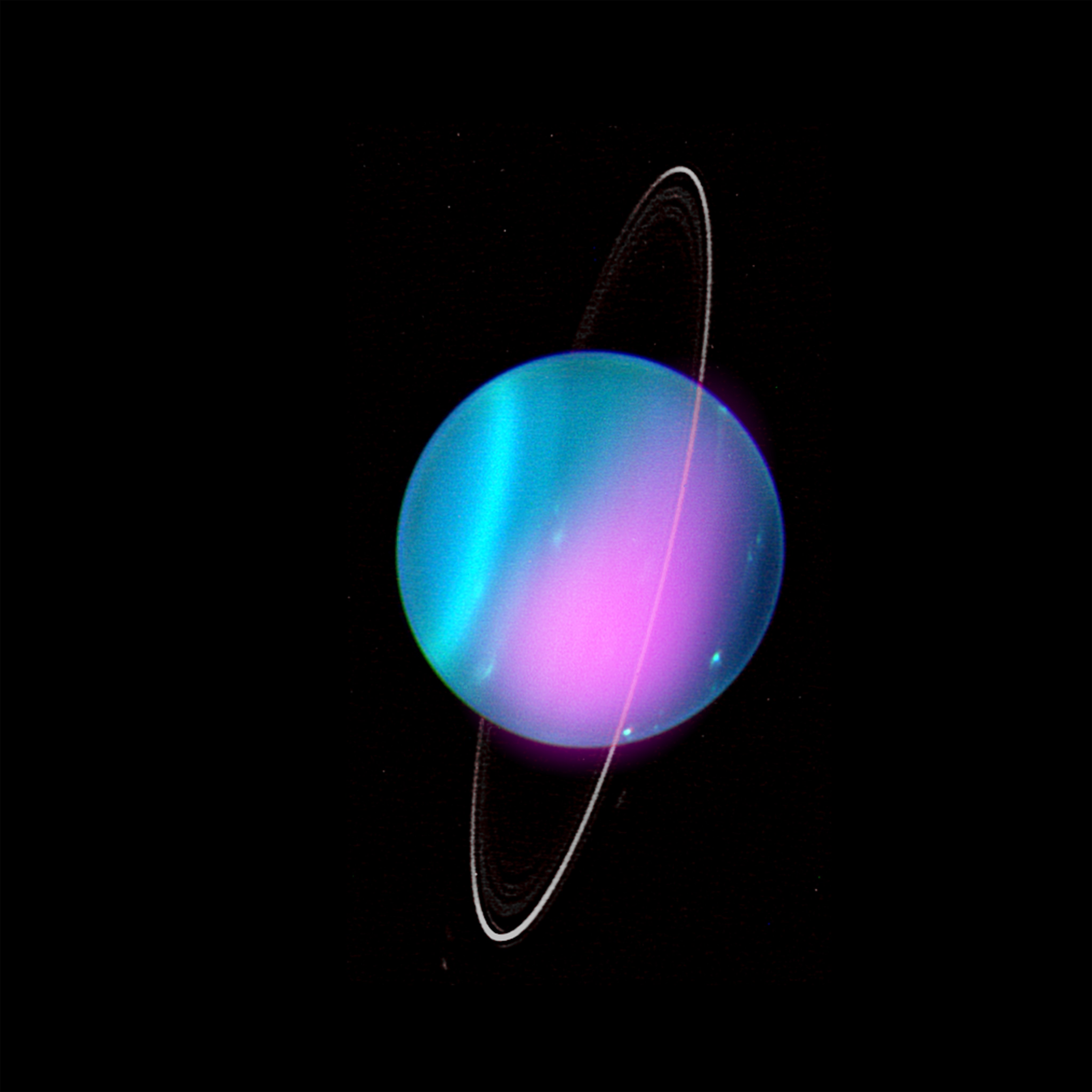Chandra Studies Uranus in X-rays

March 31, 2021
| Credit | X-ray: NASA/CXO/University College London/W. Dunn et al; Optical: W.M. Keck Observatory |
|---|---|
| Historical Date | March 31, 2021 |
| Language |
|
Astronomers have announced the first detection of X-rays from Uranus. Uranus, the seventh planet from the Sun, is an ice giant planet in the outer solar system. Like Jupiter and Saturn, Uranus and its rings appear to mainly produce X-rays by scattering solar X-rays, but some may also come from auroras. Observations from NASA’s Chandra X-ray Observatory from 2002 and 2017 were used to make this discovery.
More information: https://chandra.si.edu/photo/2021/uranus/

